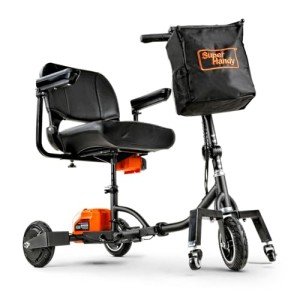Understanding Mobility Devices: Enhancing Independence and Quality of Life
In today's hectic world, the desire for mobility is universal. Nevertheless, see this page or age-related challenges can impede movement, causing a continuous look for help. Mobility devices function as necessary tools to boost independence, improve quality of life, and make it possible for people to engage totally in their neighborhoods. This short article provides an extensive summary of mobility devices, including their types, functions, choice criteria, and more.
Types of Mobility Devices
Mobility devices vary from easy aids to intricate equipment, tailored to meet different needs. Below is a table summarizing typical kinds of mobility devices:
| Type of Device | Description | Suitable For |
|---|---|---|
| Walkers | Four-legged assistance devices that supply remarkable stability while walking. | Individuals needing extra support. |
| Walking canes | Single or three-legged sticks that improve balance and assistance walking. | Those with slight mobility problems. |
| Wheelchairs | Seats installed on wheels, available in handbook and electric variations. | People with minimal or no mobility. |
| Scooters | Electric automobiles created for outdoor use and ease of navigation. | Those who can't stroll fars away. |
| Crutches | Devices that assist people transfer weight away from a hurt leg. | Individuals recuperating from leg injuries. |
| Rollators | Walkers with wheels, seats, and brakes for boosted mobility. | Users needing rest options while strolling. |
| Raise Chairs | Reclining chairs that assist users in standing and sitting down. | Seniors or those with mobility restraints. |
| Mobility Scooters | Small electric vehicles for minimal mobility, frequently utilized outdoors. | Individuals requiring assistance over fars away. |
Key Features of Mobility Devices
When picking a mobility device, several key features ought to be considered to ensure optimum performance and ease of usage:
- Weight Capacity: Understanding the gadget's weight restriction is crucial for security and effectiveness.
- Adjustability: Devices should be adjustable in height and width to fit the user conveniently.
- Portability: Lightweight and foldable options are necessary for users who travel or require transport.
- Stability and Safety: Look for functions like anti-tip wheels and sturdy structures to boost security.
- Relieve of Use: Simple mechanisms and easy to use styles can make a significant distinction in everyday use.
- Comfort: Ergonomic styles and padded seats can improve the user experience.
Selecting the Right Mobility Device
Selecting the best mobility gadget can be a daunting task. Here are some steps to direct the decision-making process:
- Assess Needs: Evaluate the person's mobility obstacles and day-to-day activities.
- Speak with a Professional: Engage health care specialists who can supply recommendations based on the person's physical condition.
- Trial Options: If possible, trial different devices to figure out comfort and performance.
- Evaluation Budget: Consider the cost of the device, consisting of any additional features or modifications needed.
- Research Options: Determine the best brands and models by checking out reviews and contrasts.
Table: Comparative Analysis of Popular Mobility Devices
| Device | Benefits | Drawbacks |
|---|---|---|
| Walkers | Exceptional stability, promotes walking. | Large, may restrict motion in small areas. |
| Walking canes | Lightweight, improves balance. | Might not offer enough assistance for severe mobility issues. |
| Wheelchairs | Perfect for those with considerable mobility limitations. | Can be troublesome, specifically in indoor environments. |
| Scooters | Great for outdoor usage, simple to maneuver. | Limited indoor use, much heavier. |
| Rollators | Offers rest option, easy to move. | May require more area than traditional walkers. |
| Raise Chairs | Comfortable, helps shift from sitting to standing. | More costly, larger footprint. |
Frequently Asked Questions (FAQs)
1. What is a mobility gadget?
A mobility device is any tool designed to help people in moving and navigating their environment. This includes walkers, wheelchairs, scooters, and crutches.
2. How do I know which mobility gadget is best for me?
Consider your specific mobility obstacles, physical capabilities, and way of life needs. Consulting with health care specialists can also offer customized recommendations.
3. Are mobility devices covered by insurance coverage?
Numerous insurance strategies, consisting of Medicare, might cover specific mobility devices. It's crucial to contact your insurance provider for particular protection information.
4. Can I rent a mobility device instead of buying one?
Yes, lots of medical supply stores and pharmacies provide rentals for mobility devices. This choice is useful for individuals with short-lived mobility issues.
5. How can I maintain my mobility gadget?
Routine maintenance is crucial. It includes cleaning the device, looking for wear and tear, and ensuring all parts are functioning correctly.
The Impact of Mobility Devices on Quality of Life
Mobility devices significantly improve the quality of life for individuals with restricted mobility. They cultivate independence, encourage social interaction, and improve access to essential services and leisure activities.
- Increased Independence: Users can navigate their communities, attend occasions, and participate in hobbies without depending on others.
- Social Engagement: Mobility devices facilitate involvement in social events, thus combating feelings of seclusion.
- Boosted Safety: Devices offer stability and decrease the risk of falls, promoting user confidence.
Mobility devices are more than just tools for motion; they are entrances to independence and quality living. By comprehending the different types of mobility aids offered, their key functions, and considerations for choosing the best device, individuals can make informed decisions about their mobility needs. Ultimately, the right mobility device can result in a more active, fulfilling life. Whether it's a walker, wheelchair, or scooter, the ideal option contributes considerably to improving the mobility and independence of users.

